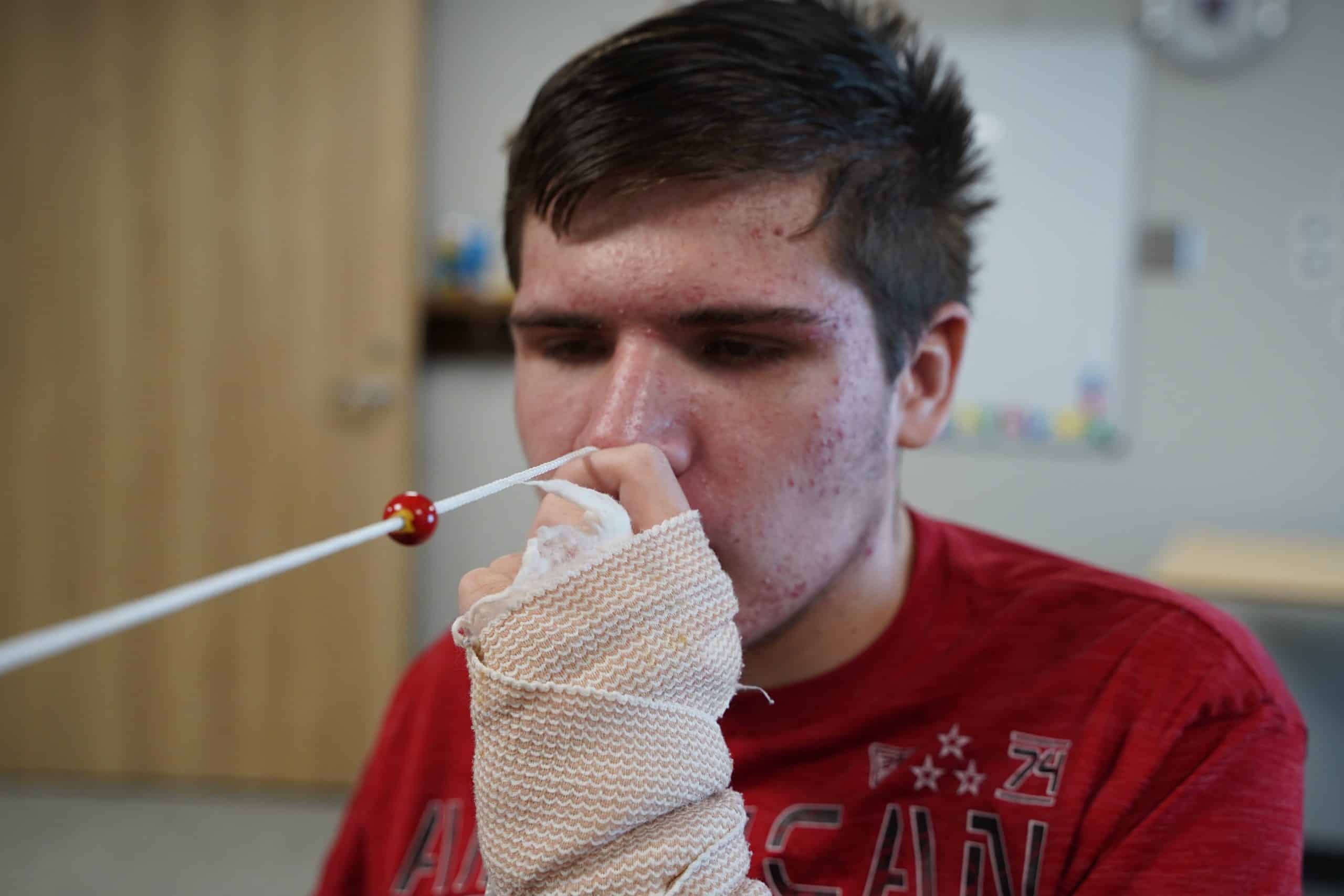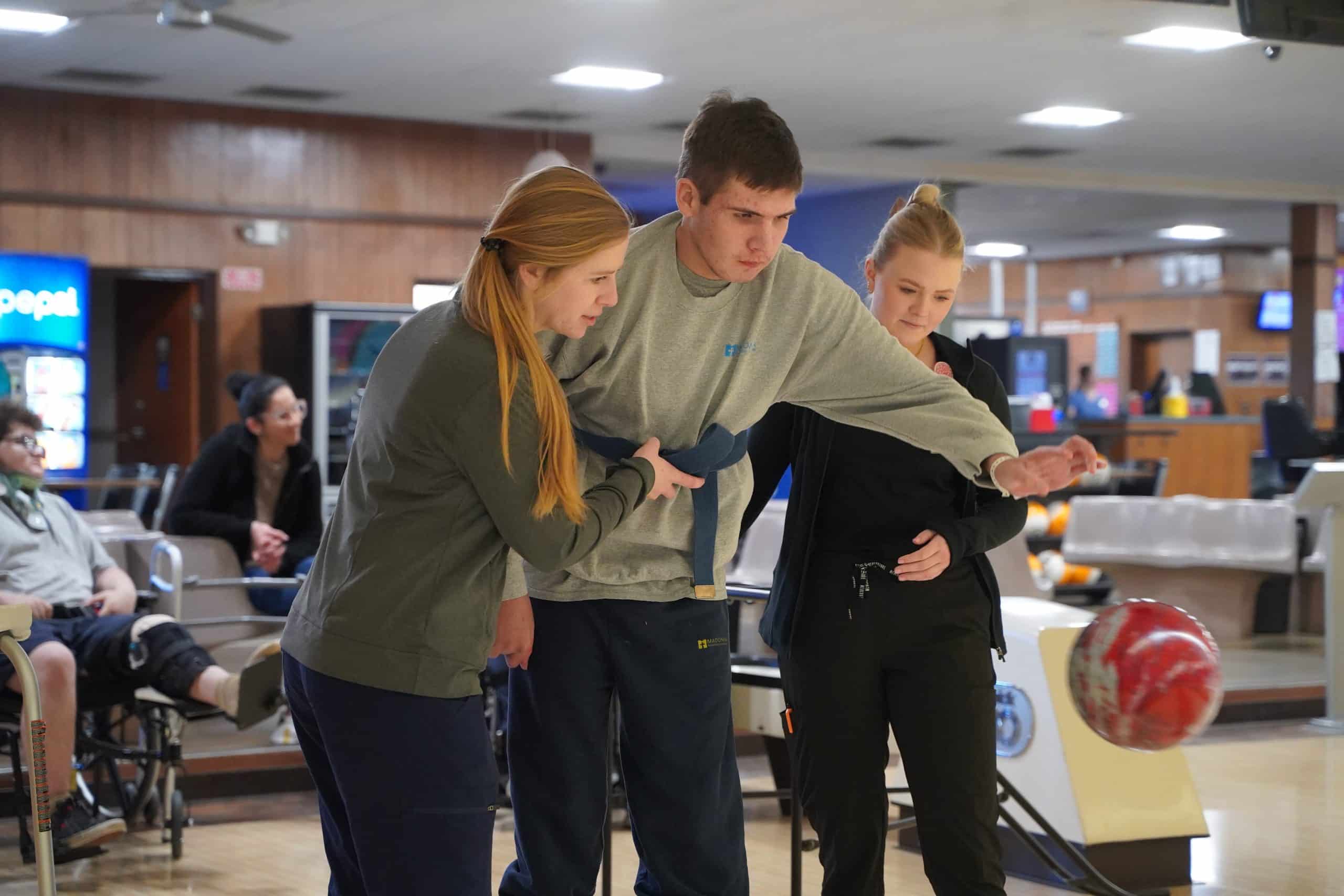For patients, humor can be a great tool to help break up daily challenges and reset their mindset as they take on the difficulties of recovery. But for 19-year-old, Sagan Schultz, his care team learned pretty quickly that humor was also a great tool for motivation.
“From the first session that he started giggling in the standing frame, we knew that joking around and humor and positivity was absolutely his personality,” Karen Eilers, PT, DPT, CBIS, physical therapist said. “We would have a daily joke and would tell awesome dad jokes every day. We used that throughout all of our sessions to motivate him that if we walk down the hall, we could tell someone a joke and he just thrived.”
Following an October 2023 car accident, Sagan spent six weeks in the intensive care unit at Wesley Medical Center in Wichita, Kansas. He sustained a traumatic brain injury, had his spleen removed and his jaw wired shut.
“Doctors told me that he was in poor condition and that I needed to prepare myself to see him on [a] breathing machine,” Janelle Williams, Sagan’s mom, said. “They said he had a lot of swelling and they were really focused on the first 24 hours to make sure the numbers would go down and he didn’t sustain a bleed.”
Once he was stable enough for transport, the Hays, Kansas, native came to Madonna Rehabilitation Hospitals’ specialized brain injury program.
In the first two weeks at Madonna, Sagan started to emerge from his minimally conscious state and he communicated through thumbs up and down. He also was unable to move and dependent on his care team to transition from a wheelchair to balance on the edge of a bed.
Sagan returned to an acute care hospital for a follow-up surgery and when he came back to Madonna, his recovery accelerated rapidly.
“It turned pretty quickly,” Emily Adams, OTR/L, CBIS, occupational therapist said. “We came back on Monday, and he was saying simple full sentences. I was like, ‘who is this kid?’ It was really cool to witness.”
As Sagan progressed, the intensity of his therapies also ramped up. Eilers started him on the Lokomat body weight support treadmill to get him upright and tolerate the walking motion. Soon, they were able to take off the robotic legs and just use body weight support and then progressed to using a walker over the ground.
For occupational therapy, Sagan maintained good control over his arms and hands, but his muscles were tight. Adams used serial casting, which put a series of casts of Sagan’s arms and then every few days, they would turn the joint a little farther in the direction it needed to go. This helped improve his range of motion and stretch in his arms and so then they could focus on the functional strengthening of Sagan’s arms and hands. Adams also emphasized Sagan’s need for vision therapy.
“We worked on higher-level binocularity skills, and he was in daily vision groups with us,” Adams said. “We focused a lot on bringing both eyes in together, making sure that he wasn’t seeing double.”



While Sagan’s care team quickly picked up on the motivational humor, they also took full advantage of his competitive side.
“He was very competitive,” Adams said. “He was going to hit any goal that he wanted. Cornhole was his favorite thing, and he did not like to lose.”
Sagan’s care team incorporated recreation activities and outings into his therapy, including a trip to the shooting range and the bowling alley, helping with community reintegration.
“I used to go to a bowling league every week,” Sagan said. “I used to be really good at bowling. I can’t wait to go back.”
Now that Sagan is back home, the competitive jokester has found his way to the lanes and the cornhole boards, with a newfound appreciation and pride for everything he has endured.
“I can’t rewind my life; it is what is,” Sagan said. “I’m pretty proud of myself though.”





